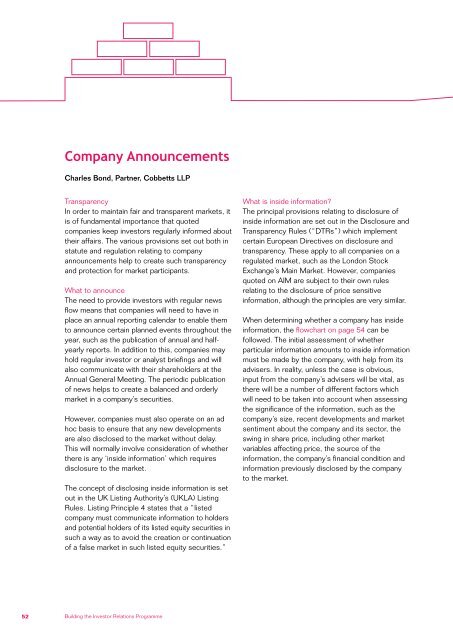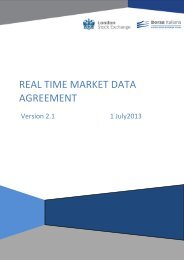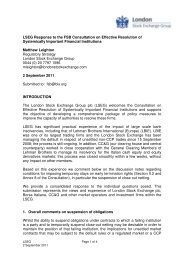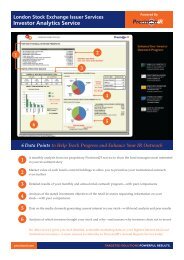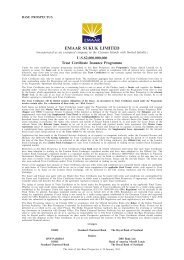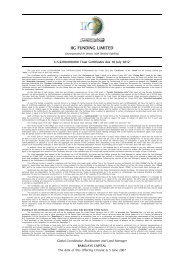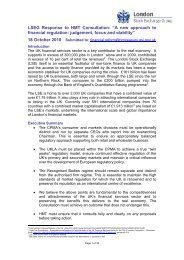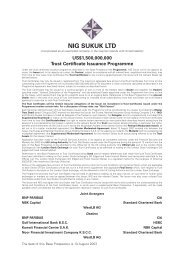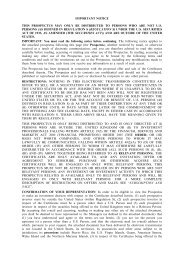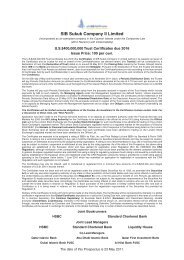Investor Relations - A Practical Guide - Investis
Investor Relations - A Practical Guide - Investis
Investor Relations - A Practical Guide - Investis
Create successful ePaper yourself
Turn your PDF publications into a flip-book with our unique Google optimized e-Paper software.
Company Announcements<br />
Charles Bond, Partner, Cobbetts LLP<br />
Transparency<br />
In order to maintain fair and transparent markets, it<br />
is of fundamental importance that quoted<br />
companies keep investors regularly informed about<br />
their affairs. The various provisions set out both in<br />
statute and regulation relating to company<br />
announcements help to create such transparency<br />
and protection for market participants.<br />
What to announce<br />
The need to provide investors with regular news<br />
flow means that companies will need to have in<br />
place an annual reporting calendar to enable them<br />
to announce certain planned events throughout the<br />
year, such as the publication of annual and halfyearly<br />
reports. In addition to this, companies may<br />
hold regular investor or analyst briefings and will<br />
also communicate with their shareholders at the<br />
Annual General Meeting. The periodic publication<br />
of news helps to create a balanced and orderly<br />
market in a company’s securities.<br />
However, companies must also operate on an ad<br />
hoc basis to ensure that any new developments<br />
are also disclosed to the market without delay.<br />
This will normally involve consideration of whether<br />
there is any ‘inside information’ which requires<br />
disclosure to the market.<br />
The concept of disclosing inside information is set<br />
out in the UK Listing Authority’s (UKLA) Listing<br />
Rules. Listing Principle 4 states that a “listed<br />
company must communicate information to holders<br />
and potential holders of its listed equity securities in<br />
such a way as to avoid the creation or continuation<br />
of a false market in such listed equity securities.”<br />
What is inside information<br />
The principal provisions relating to disclosure of<br />
inside information are set out in the Disclosure and<br />
Transparency Rules (“DTRs”) which implement<br />
certain European Directives on disclosure and<br />
transparency. These apply to all companies on a<br />
regulated market, such as the London Stock<br />
Exchange’s Main Market. However, companies<br />
quoted on AIM are subject to their own rules<br />
relating to the disclosure of price sensitive<br />
information, although the principles are very similar.<br />
When determining whether a company has inside<br />
information, the flowchart on page 54 can be<br />
followed. The initial assessment of whether<br />
particular information amounts to inside information<br />
must be made by the company, with help from its<br />
advisers. In reality, unless the case is obvious,<br />
input from the company’s advisers will be vital, as<br />
there will be a number of different factors which<br />
will need to be taken into account when assessing<br />
the significance of the information, such as the<br />
company’s size, recent developments and market<br />
sentiment about the company and its sector, the<br />
swing in share price, including other market<br />
variables affecting price, the source of the<br />
information, the company’s financial condition and<br />
information previously disclosed by the company<br />
to the market.<br />
52<br />
Building the <strong>Investor</strong> <strong>Relations</strong> Programme


